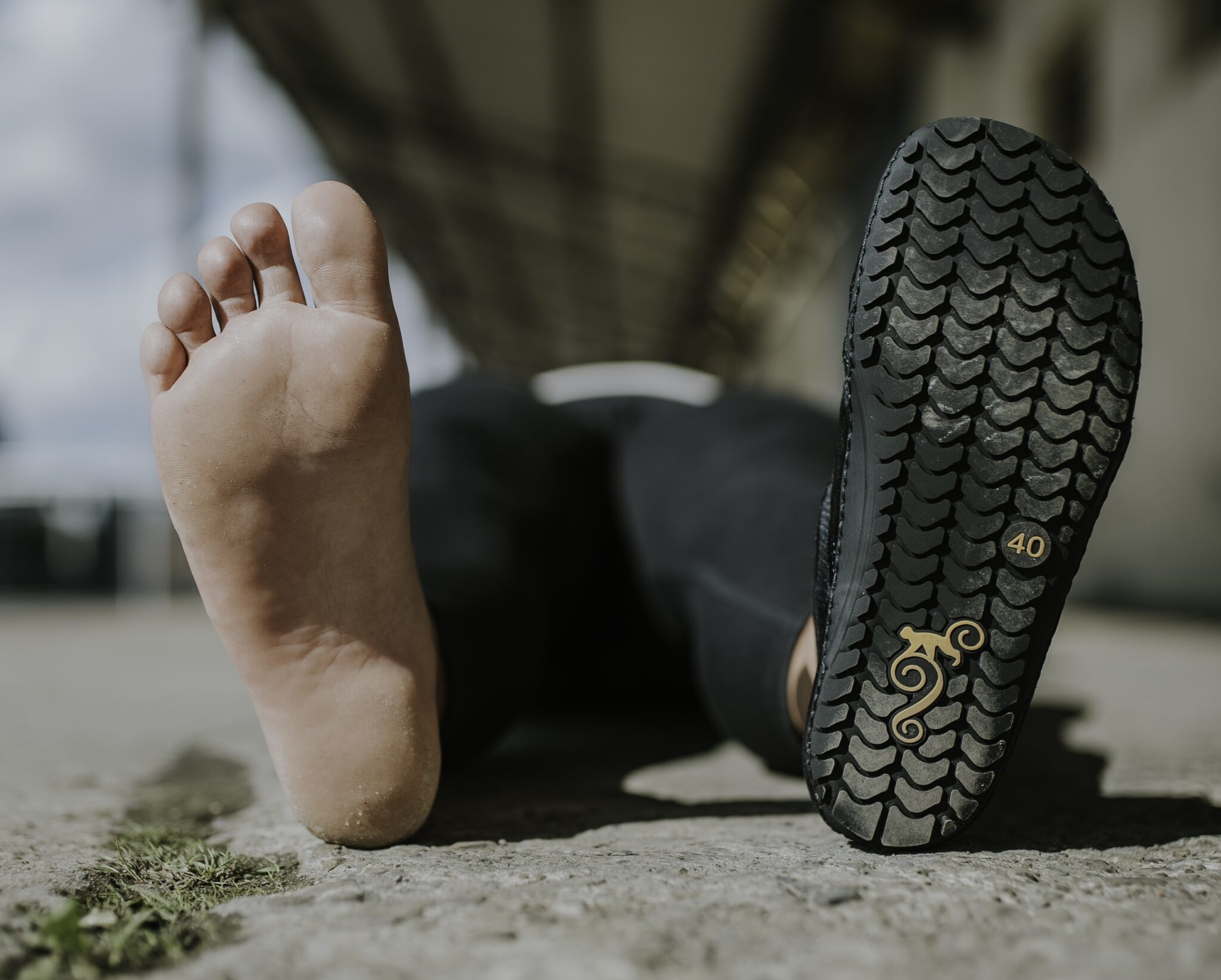
Before you continue with this article, we want to make things very clear. We are not therapists or doctors. We work with a number of specialists, but all the foot deformities mentioned and other information should always be consulted with an orthopaedist, doctor, or physiotherapist in the first instance. And we just want to give you a hint of what to look for and what problems may be caused by foot deformities. You will also find out how minimalist footwear can help with foot disorders.
How are the metatarsal bones arranged?
To start talking about foot deformities, we need to start with foot structure. We have already written about this many times within other articles, such as when walking barefoot (here will be a link), but for your convenience, we will cite the most important things.
The human foot is made up of 26 bones. All the bones are connected by ligaments. A properly constructed foot has three points of support: the heel, the head of the 1st metatarsal bone, and the head of the 5th metatarsal bone. The triangle formed by these points evenly carries the load on the foot during gait.
The foot is one of the most developed areas of our body.
You will find:
- 107 muscles, veins, arteries, and nerves with a total length of as much as 1.6km!
- hundreds of thousands of sweat glands,
- hundreds of thousands of nerve endings.
In addition, the Achilles tendon is the strongest tendon in the entire foot. So it is not surprising that with so many elements and with our feet actually bearing our weight all the time, something can go wrong.
What are the most common deformities in the foot?
There can be a whole host of causes for foot deformities, from bad footwear to old trauma, simple neglect, genetic foot deformities, and so on. We will only discuss the most common types of deformity, of which there are an increasing number in our society. The foot deformities listed can now affect up to 80% of the population!
Bunions
Hallux valgus, is a deformity of the toes, more specifically a deformity of the big toe. It is characterized by a crooked deviation of the toe, which starts to “hug” the other toes. This can also have a negative impact on the other toes. The deformity develops gradually, with inflammation and stretching of the muscles as well as micro-injuries, to develop into a clubfoot.
Some of the factors contributing to the formation of a hallux valgus toe include:
- tight, uncomfortable footwear
- narrow tips and high heels
- weak foot muscles
- frequent lower limb injuries
- rheumatoid arthritis (RA)
- gout
With the help of appropriate exercises, special treatment tools, and a change of footwear, it is possible to restore the correct alignment of the toe, and, in time, the toes can be restored to their proper position. A hallux valgus toe is also often referred to as a stiff toe.
Hollow foot
Hollow foot is a condition affecting mainly children. It is characterized by an abnormally high instep on the sole of the foot. It is often accompanied by other deformities, but the most common cause of a hollow foot is ill-fitting footwear. A child’s foot develops over several years, so constant use of poor footwear can lead to muscle weakness and shortening of the foot itself. Unnatural bending of the toes, corns on the instep, and contractures of the plantar fascia may appear, which translate into pain and difficulty moving.
If you notice these symptoms in your child, it is best to see an orthopaedist. Appropriate physiotherapy treatments can help treat the foot. If the hollow foot has occurred as a result of poorly fitting shoes, these should be replaced with orthopaedic shoes and, after therapy, with zero-drop, or minimalist, shoes.
Excessive pronation or supination
Sound scary? Pronation and supination are terms that describe, among other things, the degree to which our foot is placed in contact with the ground. Pronation is the inward positioning of the foot, and supination is the outward positioning of the foot. On their own, these actions are not bad, as they provide the necessary fluidity and flexibility when walking, but the problem arises when pronation or supination is too strong.
Excessive pronation is when the foot is turned inwards for too long with no chance for supination (i.e., the proper cycle of foot movement). You may also be familiar with the term by another name—the more commonly known flatfoot. Untreated flat feet can result in further painful deformities not only of the foot but also of the whole body!
The pronated foot can be treated with exercises suggested by a physiotherapist, the use of appropriate orthotics, and suitable footwear from an early age. Minimalist footwear helps strengthen the muscles of the foot and can therefore counteract flat feet.
Excessive supination is, as you may have guessed, the outward curling of the foot that is too frequent and strong. This puts severe stress on the joints and can lead to tendonitis, including Achilles tendonitis. If you have a foot with excessive supination, a specialist will also help you choose the right exercises or footwear.
Hammer toes
Hammer toe is a deformity that consists of a flexion contracture, usually of the second (longest) finger. The finger is characteristically flexed in the sole direction at the proximal interphalangeal joint. This contracture may be corrective (straightening of the finger is possible with the hand of the examiner) or fixed, when the finger remains in permanent contracture and it is impossible to straighten it. The main cause of this condition is usually the wearing of ill-fitting (tight or short) footwear. Over time, further painful conditions develop.
In the initial phase of hammer toe treatment, wearing shoes with a wide toe box and a flat heel will help. Special toe guards can be used. A permanent deformity may require surgery on part of the bone.
Can minimalist shoes help?
As we wrote at the beginning, before tackling any foot deformity on your own, we recommend that you consult an appropriate specialist. Especially in the case of an advanced foot deformity. If you already know how to proceed, then the next step might just be to check out minimalist (barefoot) shoes.
Barefoot shoes have several features that allow, for example, proper alignment of the foot arch, strengthening of the muscles, and toe extension through a wide front.
In addition, minimalist shoes are:
They are completely flat (zero drop) and will allow you to maintain correct posture.
Breathable and very lightweight, you won’t feel you have them on your feet.
Incredibly flexible—your foot can finally work naturally,
Wide at the toe, the shoes won’t put pressure on your toes or squish.
Thin, abrasion-resistant sole for maximum sensory feel and extra acupressure,
Top-quality materials mean the shoes will last a long time.
Fully functional shoes: shed the weight of uncomfortable, hard shoes.
Convinced? Then convince yourself on your own in our shop.





Leave a Reply